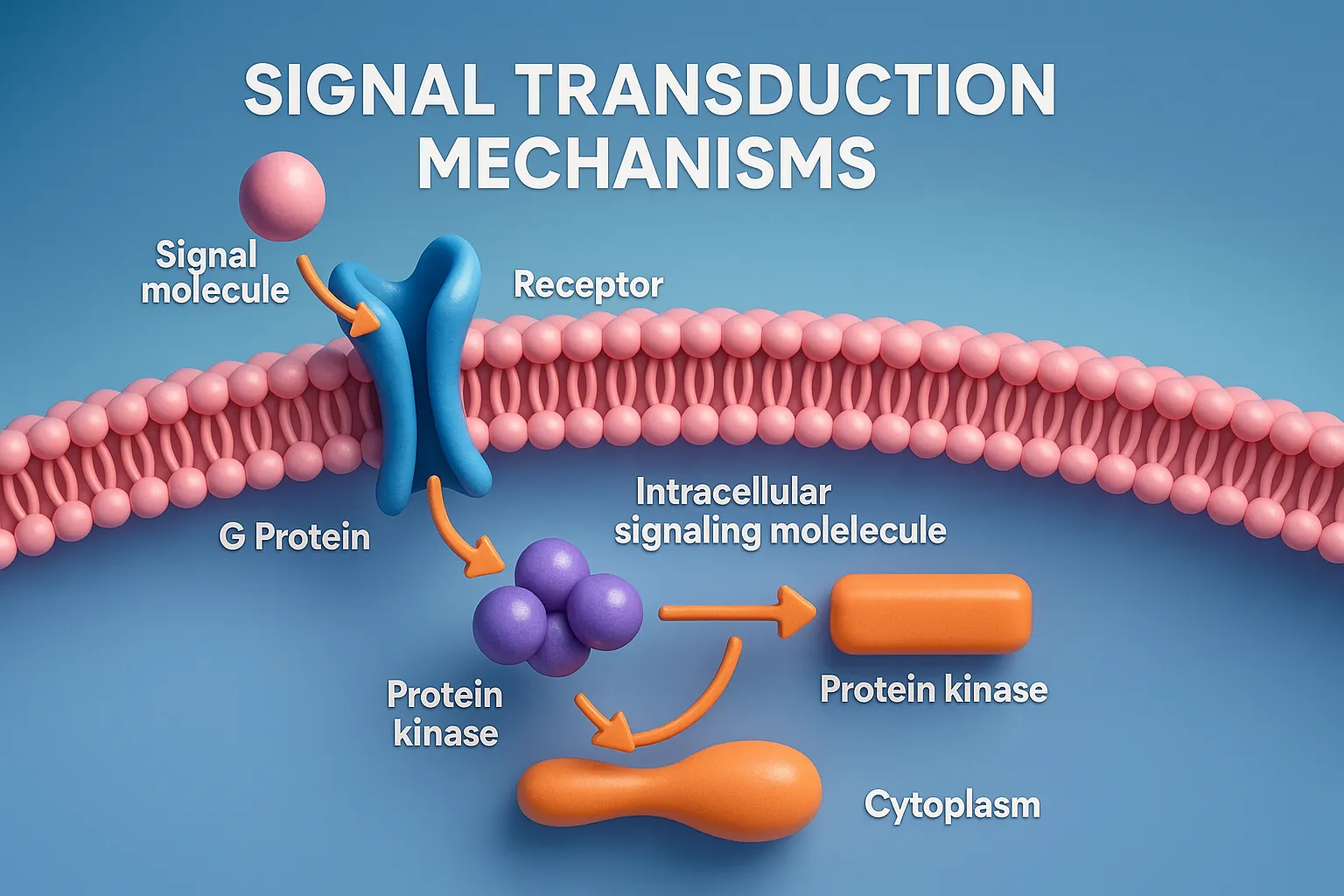This article explains about the Signal transduction mechanisms explain how receptors convert external signals into cellular responses.
Signal Transduction Mechanisms
- Signal transduction is the process by which a chemical signal (like a drug or hormone) is transmitted from the outside of the cell to the inside, leading to a cellular response.
- Most drugs act through receptors that initiate specific intracellular signaling pathways.
- The main types of receptors involved are:
- G-protein–coupled receptors (GPCRs)
- Ion channel-linked receptors
- Transmembrane enzyme-linked receptors (e.g., receptor tyrosine kinases)
- JAK-STAT–linked receptors
- Intracellular receptors regulating transcription factors
Click Here to Watch the Best Pharma Videos

